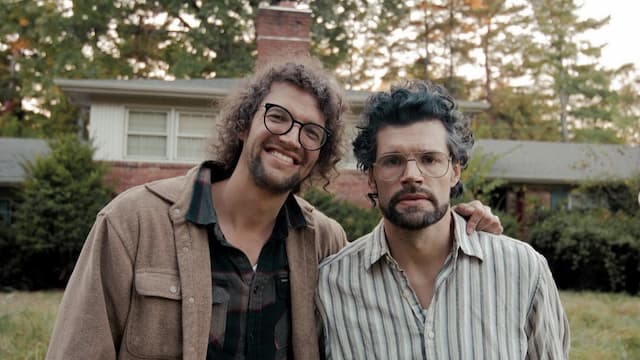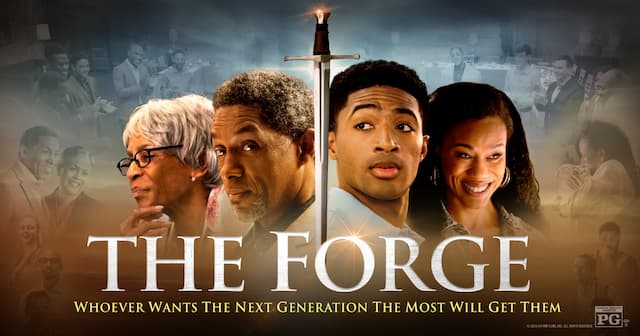The Story of Ruth – A Movie Review

I became a Christian because of Hollywood.
The “Story of Ruth” and Me
Many years ago, when I was a teenager in Brazil, I saw a movie titled “The Story of Ruth.” The movie was based on a story from the Bible. I liked the movie so much that I went home to read the Bible and learn more about Ruth.
What a great disappointment!
Although all the members of my family were Catholics, and we faithfully went to church three times every year, there was no Bible in my house. In fact, no one in my family had ever read the Bible. So, I forgot Ruth and never read her story.
A few months later, I met a Christian young man who was attending the same school I was attending. I told him about the movie and he gave me a Bible so that I could read the true story of Ruth. To make a long story short, a few months later, I was baptized and became a member of a Baptist church in my city.
In this post I will review “The Story of Ruth.” My son is a movie critic. He does not like to know the plot of the movie before hand. He wants to see a movie without any knowledge of the plot. I, on the other hand, do not mind reading a review of a movie before I see the movie. To me, it enhances my enjoyment of watching the movie.
Below I will describe the movie in detail. If you do not like spoilers, see the movie first (I will tell you where you can watch the movie), then, come back and read my review. Either way, I can assure you, you will enjoy “The Story of Ruth.”
An Overview of “The Story of Ruth”
In reviewing “The Story of Ruth” it is important to remember that the Old Testament does not provide much information about Ruth nor about Elimelech, Naomi, and their sons. Thus, in order to develop a plot for the movie, Norman Corwin, the writer of the script, had to be creative and develop a story that would provide the background to tell the story of Ruth.
Norman Corwin was very creative, but his story is plausible, even though it is not biblical. What he writes about Ruth is only a possible scenario of who Ruth was and what she did before she came to Bethlehem and married Boaz.
The movie is divided into two parts. The first part of the movie deals with the life of Ruth in Moab. Her story in Moab begins when she was a little girl and ends with the death of Mahlon, Ruth’s husband.
The second part of the movie deals with the life of Ruth in Bethlehem. It is here that the biblical story begins. For someone who did not know anything about the Bible, the story of Ruth in Bethlehem was a beautiful story. However, when the movie plot is compared with the Bible, the movie departs from the narrative of the Old Testament, even though Norman Corwin’s creativity falls within the realm of possibility.
Ruth in Moab
As I mentioned above, Norman Corwin had to develop a story about Ruth’s life in Moab since the Old Testament does not say anything about Ruth’s childhood. The movie begins when Ruth’s father, a poor man, sells his daughter to serve in the temple of Chemosh, the Moabite god.
When Ruth was about ten years old, she was chosen to be sacrificed on the altar of Chemosh. However, when the priest of Chemosh took Ruth to be sacrificed, a mysterious blemish appeared on her arm, a blemish that was not there before. Another girl was selected to be sacrificed to Chemosh in place of Ruth. As soon as the other girl was selected, the blemish on Ruth’s arm disappeared.
In the next scene, Ruth (played by Elana Eden) is a grown-up woman who is the spiritual adviser of a young girl who was about to be sacrificed to Chemosh. A ritual crown was prepared for the young girl, but the priestess of Chemosh believed that the crown was poorly made. So, the priestess of Chemosh and Ruth went to the house of an artisan to request that a better crown be made for the ceremony.
The artisan was Elimelech (played by Les Tremayne). At this time Ruth met Mahlon (played by Tom Tryon), the son of the artisan. After Mahlon finished the new ritual crown, he went to Chemosh’s temple and delivered the ritual crown to Ruth.
Mahlon told Ruth that the sacrifice of children was wrong. Mahlon questioned Ruth about the existence of her god. The conversation left Ruth in doubt about the existence of Chemosh. So, she wanted to know more about Mahlon’s God and her own god. In Mahlon’s next visit to Ruth, he gave her a small replica of the two tables of the Law containing the Ten Commandments.
Ruth fell in love with Mahlon. When the time came to sacrifice the young girl, Ruth refused to participate and ran away from the ceremony. The Moabites blamed Mahlon for what happened. They raided Elimelech’ shop, killed him and his son Chilion (played by John Gabriel). Mahlon was apprehended and sentenced to hard labor.
When Ruth heard of what happened, she developed a plan to rescue Mahlon. In the attempt to escape, Mahlon was wounded and was dying. Before Mahlon died, Ruth and Mahlon got married. As soon as they got married, Mahlon died and was buried in a cave in Moab.
Naomi (played by Peggy Wood) decided to return to Bethlehem. She told Orpah (played by Ziva Rodann) and Ruth to return to their families. Orpah agreed, but Ruth decided to go to Bethlehem with Naomi. Ruth told Naomi: “Where you go, I will go; where you lodge, I will lodge; your people shall be my people, and your God my God” (Ruth 1:16).
On their way to Bethlehem, Naomi and Ruth had to hide from Moabite soldiers. The soldiers were sent by the priest of Chemosh to bring Ruth back so that she could be punished for her refusal to participate in the ritual sacrifice of the young girl to Chemosh.
Ruth in Bethlehem
The movie begins with an angel looking at the city of Bethlehem and the role it will play in the distant future in the coming of the Messiah. The angel appears twice more in the movie to reveal and confirm what will happen to Ruth. There is no mention of an angel in the book of Ruth. The angel is added to the story to give assurance to Naomi that God had a purpose in what was happening to Ruth.
Another deviation from the Bible is the hostility of the people of Bethlehem to Ruth’s background as a Moabite. This hostility against Ruth is present throughout the movie. One reason for this hostility is because of Ruth’s work as a priestess of Chemosh. Another reason for this may be the admonitions prohibiting Moabites from being admitted into the fellowship of Israel, “No . . . Moabite or any of his descendants may enter the assembly of the LORD, even down to the tenth generation” (Deuteronomy 23:3).
In his discussion of the law about the Moabites, Rabbi Meir Levin writes, “The book of Ruth appears to disregard the Torah law that does not allow Moabites to enter into the Jewish people. The Torah prohibits marriage to Moabites but Ruth is not only welcomed but is an ancestor of King David, and through him the Messiah.”
To mitigate the implications of this law, Jewish tradition says that only a male Moabite cannot join the assembly of the Lord and that females are exempt from the prohibition. In addition, Jewish tradition emphasizes the submissive role Ruth plays in the book. Levin writes, “We have already noted that Ruth plays an exceedingly passive role in this book. Ruth follows the direction of others and never asserts herself; even her child ‘is born to Naomi.’”
Contrary to the book of Ruth, even Boaz at their first encounter was hostile to Ruth, but he kind of repents of his hostility and went to the city and brought some grain to Ruth and Naomi. Boaz’s action of bringing grain to Naomi’s house is not in the Bible.
Naomi had two kinsmen, Boaz and another man whom the Bible calls peloni ’almonî. This expression indicates that the name of the second kinsman is unknown and the translations differ on what to call him. The NRSV calls him “friend.” The TNK calls him “So-and-so.” The KJV calls him “such a one.” The CJB calls him “Such-and-such.” In the movie, this unknown kinsman is called Tob (played by Jeff Morrow).
In the movie, this unknown kinsman was not hostile to Ruth and wanted to marry her. In the book of Ruth we do not know whether or not the kinsman wanted to marry Ruth. In the book of Ruth, the kinsman only refused to marry Ruth after he discovered that he must fulfill the law of the Levirate.
The law of the Levirate stipulates that by marrying Ruth, he would have to buy the land that once belonged to Elimelech, but the land would not be his, but to a son born to Mahlon through him. The kinsman declined to marry Ruth and to exercise the law of the Levirate.
After the kinsman declined to marry Ruth, in the presence of the elder, Ruth and Boaz got married. The movie ends with the naming of the child born to Ruth and the recital of the genealogy of David, “They named him Obed; he became the father of Jesse, the father of David” (Ruth 4:17).
Evaluating “The Story of Ruth”
“The Story of Ruth” was released in 1960. The movie was directed by Henry Koster. The screenplay was written by Norman Corwin. In many ways the movie deviates from the biblical text. However, “The Story of Ruth” is a good movie and it deserves to be watched. I watched the movie again recently. I enjoyed relieving the story of Ruth and the role the movie played in bringing me to church.
The movie also deserves to be watched because of what it teaches about the religion of the Moabites. Although the presentation is fictitious, one learns much about the Moabites’ devotion to a false god.
I recommend the movie to you. What is better, you can watch the movie free on YouTube.
I will see you at the movies.
Next Review: Samson and Delilah
Read how Hollywood deals with the Old Testament: The Old Testament Goes Hollywood
Claude Mariottini
Emeritus Professor of Old Testament
Northern Baptist Seminary
NOTE: Did you like this post? Do you think other people would like to read this post? Be sure to share this post on Facebook and share a link on Twitter or Tumblr so that others may enjoy reading it too!
I would love to hear from you! Let me know what you thought of this post by leaving a comment below. Be sure to like my page on Facebook, follow me on Twitter, follow me on Tumblr, Facebook, and subscribe to my blog to receive each post by email.
If you are looking for other series of studies on the Old Testament, visit the Archive section and you will find many studies that deal with a variety of topics.





